Abstract
OBJECTIVES. The purpose of this study was to ascertain how economic reform has affected nutritional well-being of the elderly in the Russian Federation. METHODS. A sample of more than 2932 Russians 60 years of age and older was selected from a nationally representative survey of Russian households. A 24-hour dietary recall and data on weight, height, and socioeconomic status were collected during 1992 and 1993 and from a separate nationally representative sample of 1955 persons in the same age group in 1994. RESULTS. Russia's elderly did not experience major declines in economic or nutritional well-being during the first 2 years of the reform period. Dietary composition shifted slightly toward reduced fat consumption. A small proportion of individuals showed signs of underweight. Of those who were underweight in 1992, none had lost more than 3 kg of weight by 1993. Among those 70 years of age and older, none who were underweight had lost any appreciable weight, although half lost small amounts. CONCLUSIONS. Many more underweight elderly people increased than reduced their weight. Mean weight increased among all body mass index groups over the year reported here. However, economic conditions in December 1994 raise concerns.
Full text
PDF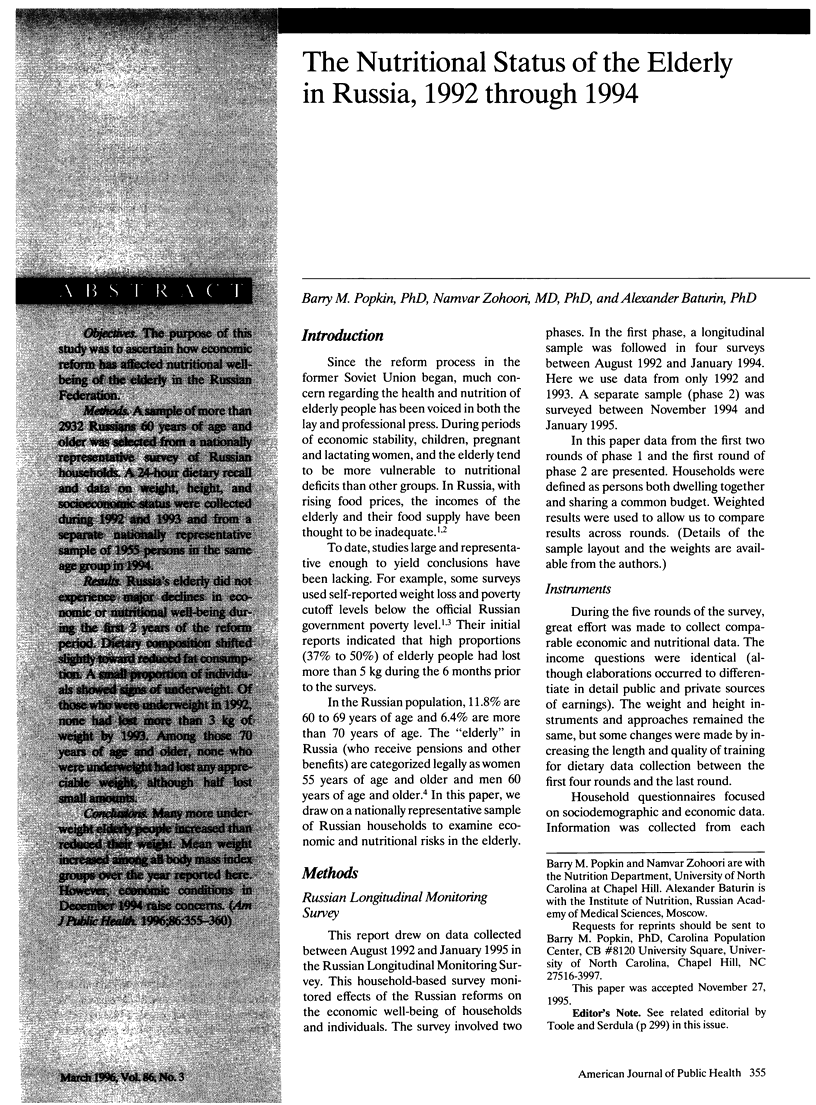
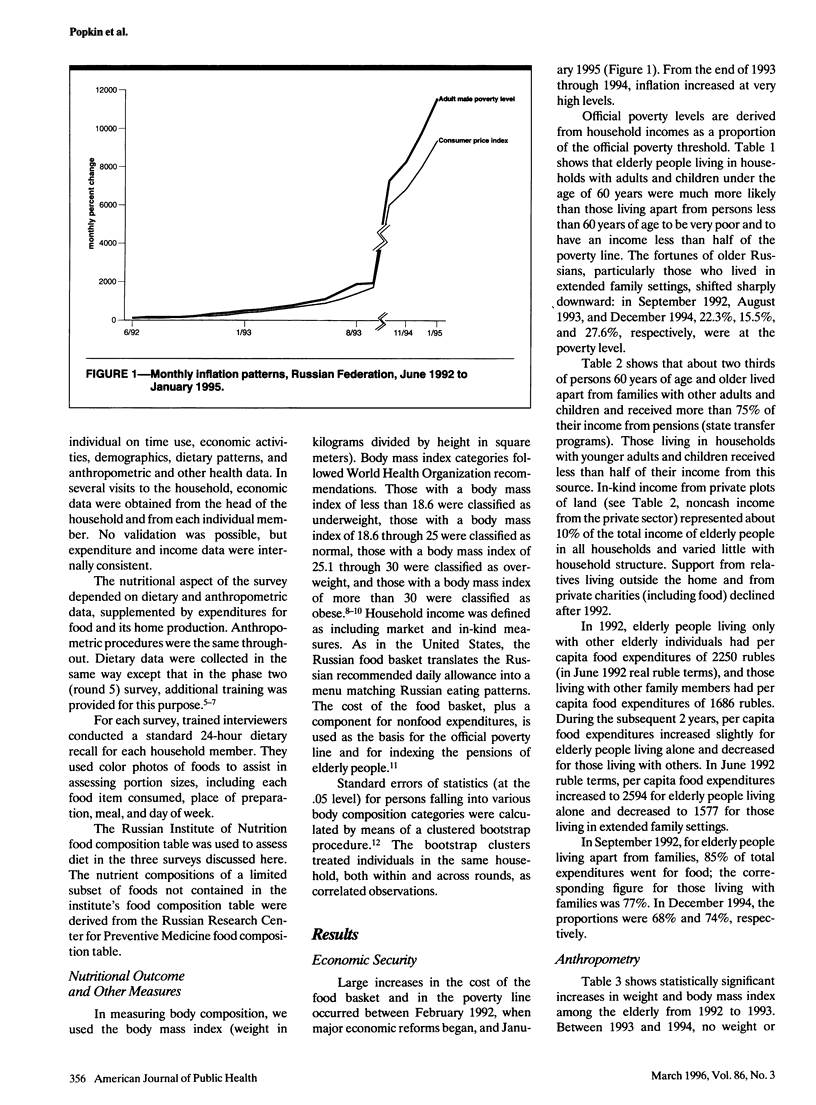
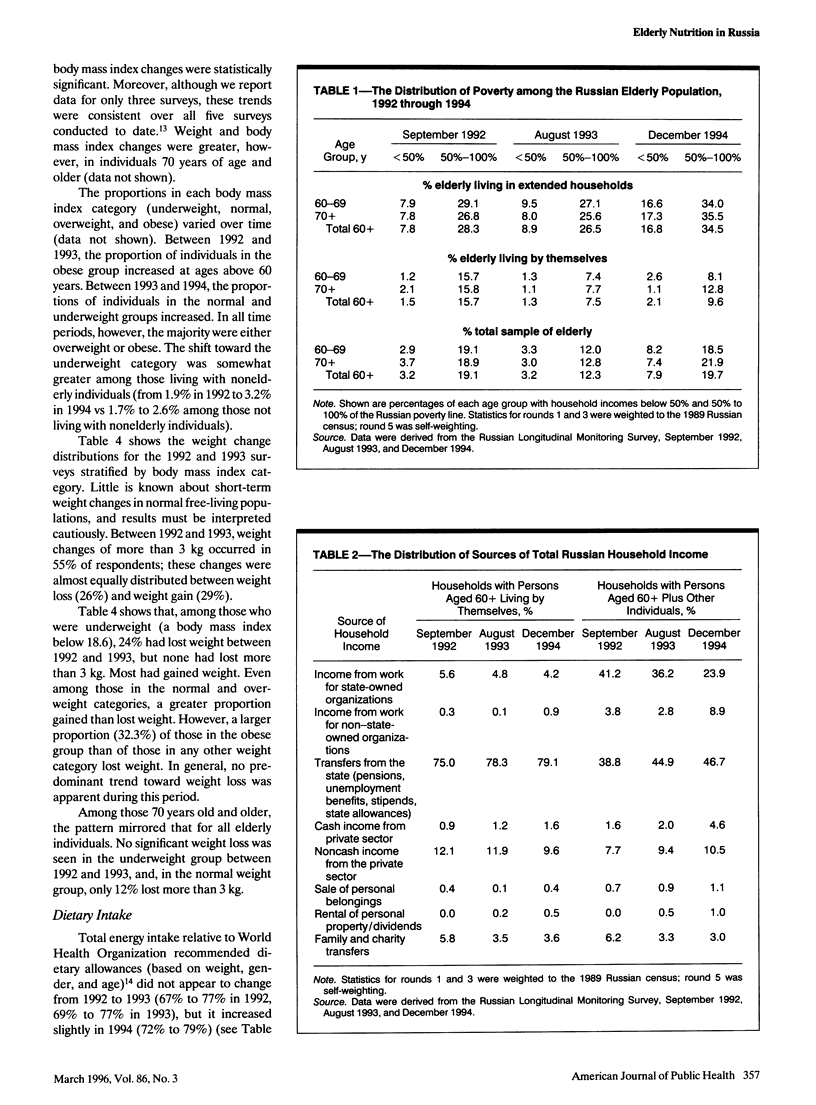
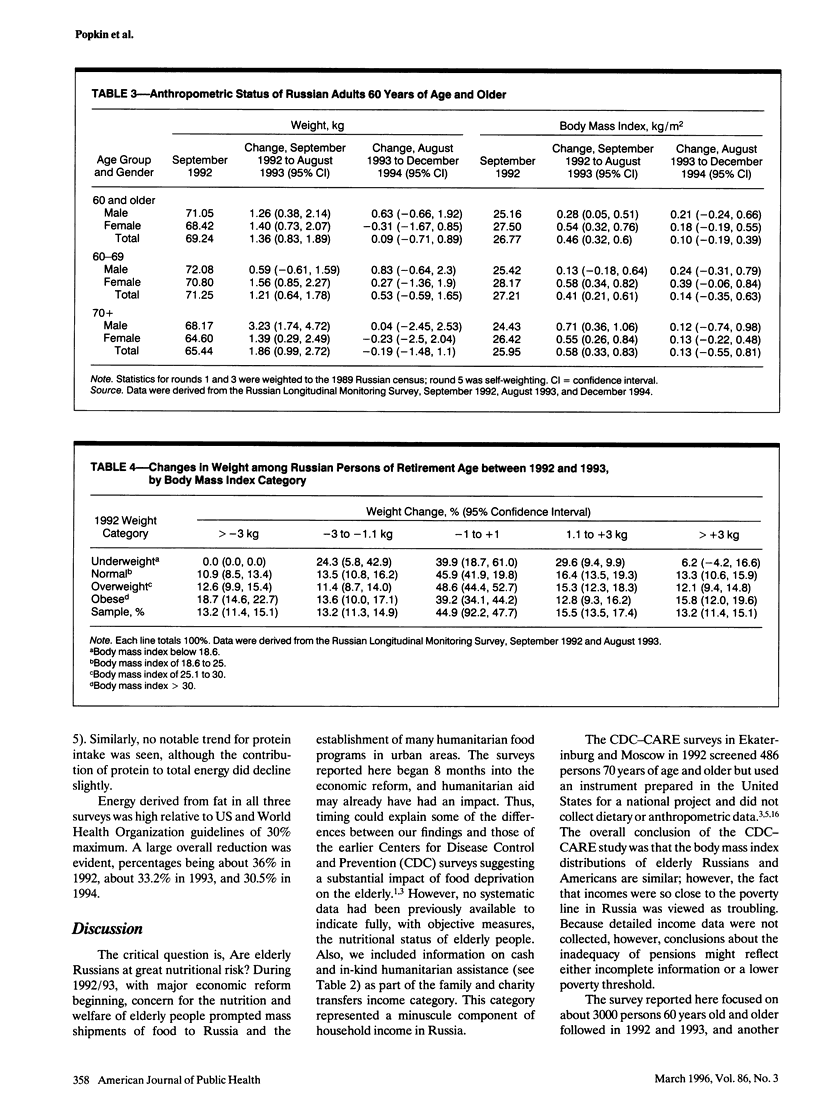
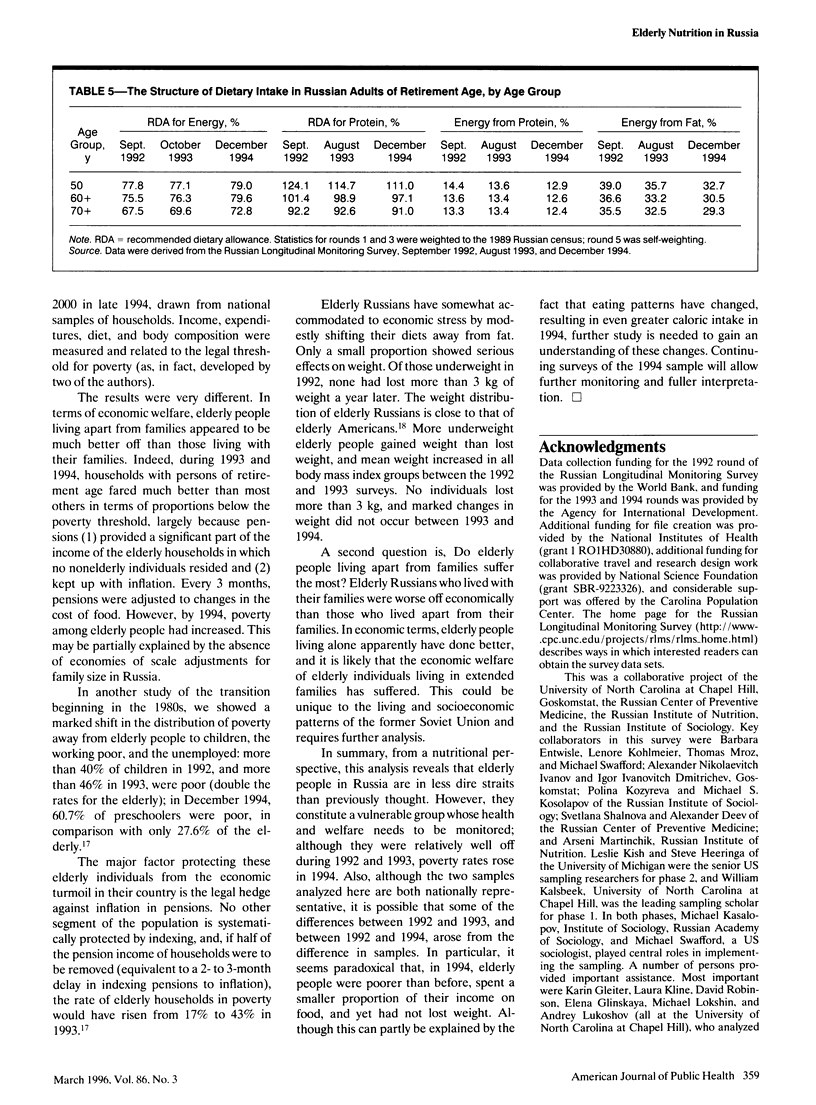
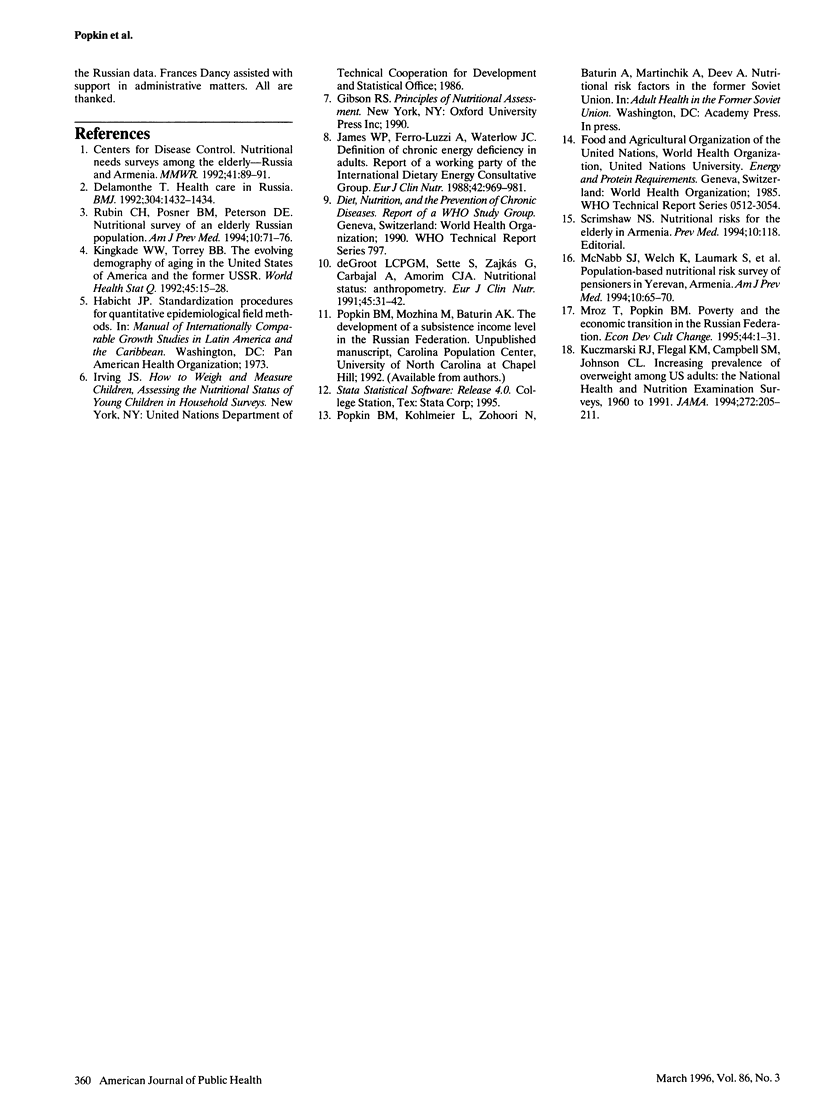
Selected References
These references are in PubMed. This may not be the complete list of references from this article.
- Delamothe T. Helping Russia. BMJ. 1992 May 30;304(6839):1432–1434. doi: 10.1136/bmj.304.6839.1432. [DOI] [PMC free article] [PubMed] [Google Scholar]
- James W. P., Ferro-Luzzi A., Waterlow J. C. Definition of chronic energy deficiency in adults. Report of a working party of the International Dietary Energy Consultative Group. Eur J Clin Nutr. 1988 Dec;42(12):969–981. [PubMed] [Google Scholar]
- Kingkade W. W., Torrey B. B. The evolving demography of aging in the United States of American and the former USSR. World Health Stat Q. 1992;45(1):15–28. [PubMed] [Google Scholar]
- Kuczmarski R. J., Flegal K. M., Campbell S. M., Johnson C. L. Increasing prevalence of overweight among US adults. The National Health and Nutrition Examination Surveys, 1960 to 1991. JAMA. 1994 Jul 20;272(3):205–211. doi: 10.1001/jama.272.3.205. [DOI] [PubMed] [Google Scholar]
- McNabb S. J., Welch K., Laumark S., Peterson D. E., Ratard R. C., Toole M. J., Farley T. A. Population-based nutritional risk survey of pensioners in Yerevan, Armenia. Am J Prev Med. 1994 Mar-Apr;10(2):65–70. [PubMed] [Google Scholar]
- Rubin C. H., Posner B. M., Peterson D. E. Nutritional survey of an elderly Russian population. CARE International Working Group. Am J Prev Med. 1994 Mar-Apr;10(2):71–76. [PubMed] [Google Scholar]
- Scrimshaw N. S. Nutritional risks for the elderly in Armenia. Am J Prev Med. 1994 Mar-Apr;10(2):118–118. [PubMed] [Google Scholar]
- de Groot L. C., Sette S., Zajkás G., Carbajal A., Amorim J. A. Nutritional status: anthropometry. Euronut SENECA investigators. Eur J Clin Nutr. 1991 Dec;45 (Suppl 3):31–42. [PubMed] [Google Scholar]


